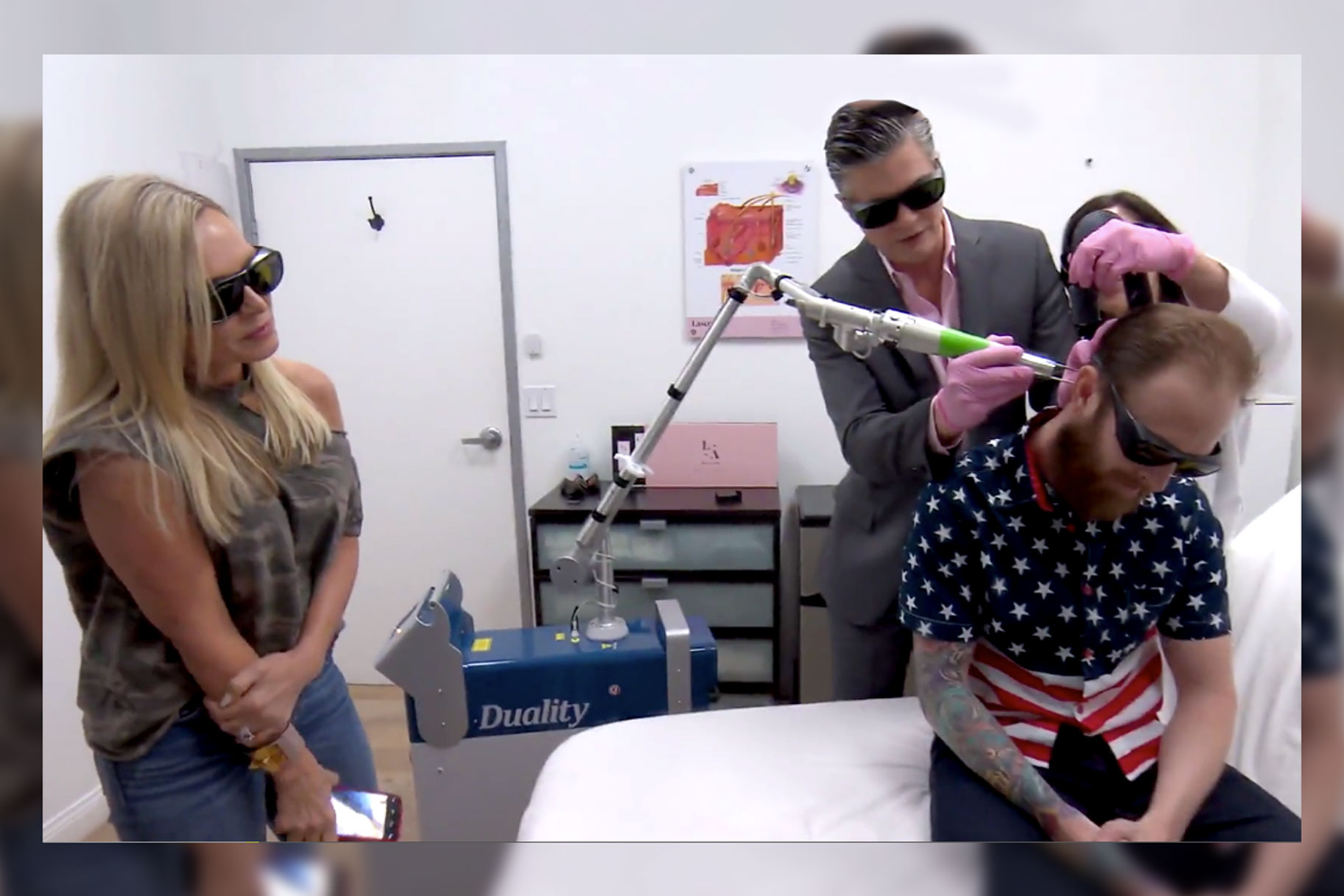
Create a free profile to get unlimited access to exclusive videos, sweepstakes, and more!
So What Really Happens When You Get an Old Tattoo Removed?
Tamra Judge's son's tattoo removal on RHOC left us with so many questions, so we got answers from the tattoo removal pro.

Whether you want to erase an ex partner’s name from your ring finger (remember that, Tamra Judge?) or take off a flaming “A” from your butt (hi, Tom Sandoval!), it's nice to know that there's still hope if you hate an old tattoo. On this week’s episode of The Real Housewives of Orange County, Tamra brought her son Ryan to the dermatologist to remove a “money on my mind” tattoo from his neck. She joked that she was there for “moral support in case he passes out,” but also to relish the moment, since she had warned him years before that he’d come to regret some of his ink eventually.
Ryan explained that he got that tattoo while going through a phase, and the older he gets, the more he wants everything “covered up.” Tamra warned that removing her back tattoo was painful, but luckily Ryan was in good hands with Board Certified Dermatologist Dr. Will Kirby.
BravoTV.com chatted with Dr. Kirby to learn more about the tattoo removal process.
Why do most people come in for tattoo removal?
Dr. Will Kirby: The overall, number one reason patients seek laser tattoo removal is because of an ex’s name — as you can imagine, it’s hard to be in a new healthy, relationship if you are constantly reminded of an old one. That said, the reasons people have tattoo regret is limitless; the simple fact of the matter is that people change, and the person you were 10 years ago isn’t the person you are today, nor is it the person you’ll be 10 years from now. Others remove tattoos for professional reasons, meaning they need to look more wholesome for their occupation. Also, I’d be remiss if I didn’t mention that some tattoos are just really, really ugly!
Are certain tattoos more difficult to remove than others?
The biggest factor in removing tattoos is the color of the ink. Some ink colors, like black, are ironically the easiest to remove. Others, like some browns, pinks, oranges, and yellows are nearly impossible to remove. Additionally, tattoos on distal extremities like the fingers, toes, wrists, and ankles can take much longer to remove since lymphatic flow plays a vital role in ink resolution.
What is the fastest way to remove a tattoo?
There are multiple means by which you can remove a tattoo. As an example, in 2011, we attempted to remove a tattoo on Tamra’s ring finger and the ink color, pink, simply didn’t respond to treatment quickly. As such, she elected to have it surgically removed (Dr. Dubrow did the cutting and Eddie Judge proposed afterwards). So, again, pink has proven to be the biggest determining factor in laser tattoo removal. We in the aesthetic dermatology industry know that there are multiple means by which to remove a tattoo. Options include thermal destruction, cryotherapy, destruction with acid, and surgical excision. But the gold standard means by which to remove a tattoo is by laser tattoo removal.
Is the process painful? Do certain areas hurt more than others?
Laser tattoo removal is uncomfortable, but tolerable. The main association between tattoos and discomfort is the density of the ink. But location, specifically areas with less fat, like the ankle for example, can be more painful.
How much does it cost?
Very generally speaking, it costs about $50 per square inch per treatment (roughly the size of a postage stamp). But this varies widely based on the size of the tattoo and how many sessions you’ll need.
On average, how many sessions is typically needed to remove a tattoo?
Typically, most people need around 10 sessions. However, some older tattoos can resolve in as few as four or five treatments. And rarely, some tattoos need many more sessions to fade. In 2006, I authored the only paper in the medical literature that estimates how many treatments are required to remove a tattoo. The Kirby-Desai is recognized worldwide as an imperative tool in the laser tattoo removal process, and it takes six major factors into consideration, which aids a clinician in educating patients about reasonable timelines, treatment expectations, and the number of treatments necessary to achieve a clinical goal.
Does the tattoo completely disappear after?
Most tattoos can be removed completely, but some can only be faded. Rarely, because of patient skin type and ink color, tattoos won’t respond to laser treatment at all. Again, this comes down to the parameters set forth by the Kirby-Desai scale.


















